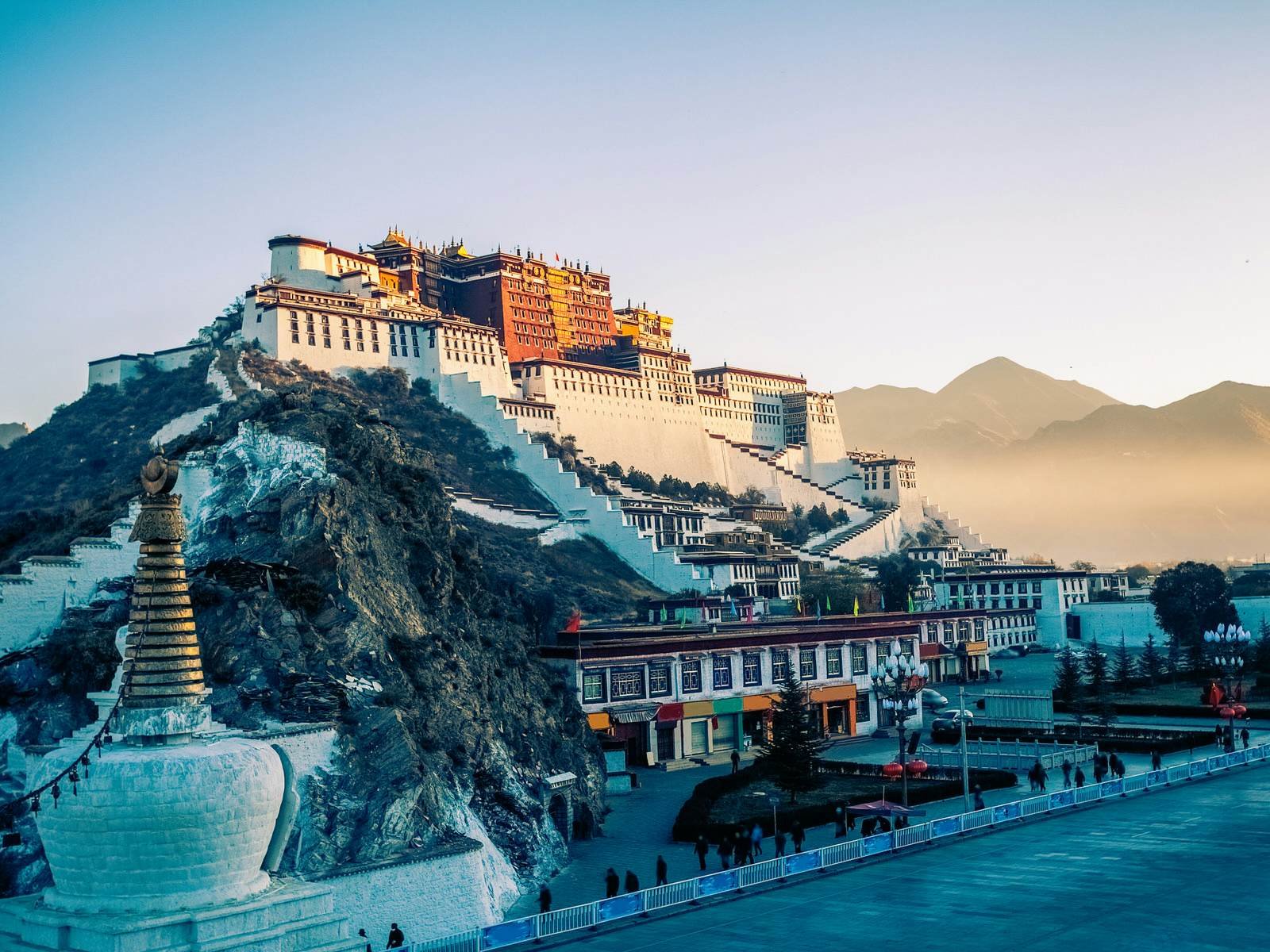
The Dragon’s Path: Shanghai to Tibet Rail Journey encapsulates an extraordinary voyage that stretches across the vast expanses of China, presenting an exquisite fusion of the country’s sprawling landscapes and its profound cultural heritage. This journey is not merely a mode of travel; it is an expedition that promises the adventure of a lifetime, inviting travelers to navigate from the vibrant, bustling streets of Shanghai to the tranquil and spiritually resplendent realms of Tibet. This unique journey offers a seamless blend of the contemporary and the traditional, illustrating the dynamic contrasts within China’s borders.
Planning Your Trip
Best Time to Travel
Choosing the right time for this journey is crucial. The optimal period for undertaking the Dragon’s Path rail journey is from late spring to early fall. This timeframe ensures the most pleasant weather conditions for travel and exploration, providing clear, breathtaking views of the landscapes and facilitating a comfortable sightseeing experience.
Necessary Preparations
Permits and Paperwork
A journey to Tibet necessitates obtaining specific permits, given the region’s unique status within China. Travelers should initiate the permit application process well in advance of their planned departure to circumvent any potential delays or complications. This preparatory step is essential for ensuring a smooth and unimpeded entry into Tibet.
What to Pack
The diverse climates encountered along this rail journey demand careful packing. Emphasizing layering in your travel wardrobe can accommodate the wide range of temperatures you’ll experience. Additionally, it’s crucial to pack essential travel documents, including your permits for Tibet, and gear suited for high altitudes to navigate the varied environments comfortably and safely.
Departure: The Shanghai Prelude
Exploring Shanghai
The journey commences with an exploration of Shanghai, a city that epitomizes China’s rapid march towards modernization while still retaining elements of its historical charm. The juxtaposition of the historic Bund and the futuristic skyline of Pudong offers a fascinating glimpse into China’s rich cultural and economic evolution. Taking the time to immerse yourself in Shanghai’s vibrant atmosphere is an integral part of the Dragon’s Path experience.
Boarding the Train
The adventure truly begins upon boarding the train. As you settle into your cabin, the anticipation of the journey ahead builds. The train serves as your gateway to the myriad experiences that await, from the scenic beauty of China’s countryside to the spiritual allure of Tibet. This rail journey promises not just a transition from one place to another but a profound journey through the heart of Chinese culture and history.
The Dragon’s Path: Shanghai to Tibet Rail Journey is more than just a travel itinerary; it’s an invitation to experience the soul of China, offering an unforgettable exploration of its geographical diversity and cultural depth.

The train passes through several major cities along the way, including Nanjing, Wuhan, Zhengzhou, Xi’an, Lanzhou, and Xining. Each city offers its unique attractions, from historical landmarks to cultural highlights. However, the highlight of the journey is undoubtedly the Tibetan Plateau. The train ascends to an altitude of over 5,000 meters (16,400 feet), offering breathtaking views of the Himalayas and the Tibetan landscape.

The Dragon’s Path rail journey from Shanghai to Tibet is an immersive expedition that promises travelers an intimate encounter with the heart of China’s geographical diversity and rich cultural heritage. This rail odyssey is not merely about traversing distances; it is an invitation to witness the majestic tapestry of landscapes and landmarks that define the Middle Kingdom, from the bustling urban sprawl of Shanghai to the serene, spiritual heights of Tibet.
Landscapes and Landmarks
The Yangtze River Crossing
The journey marks its first significant milestone as it crosses the Yangtze River, providing passengers with stunning vistas that signal the transition from the fertile plains of eastern China to the more rugged, mountainous terrains of the west. This crossing is a poignant reminder of China’s vast ecological diversity.
The Qinghai-Tibet Plateau
Ascending onto the Qinghai-Tibet Plateau, travelers find themselves amidst the unparalleled beauty of the “Roof of the World.” This high-altitude desert, framed by snow-capped mountains, offers a glimpse into the ethereal, untouched landscapes that make this journey truly remarkable.
Life on the Train
Accommodations and Amenities
Modern trains plying this route are equipped with comfortable accommodations and a range of amenities designed to make the extensive journey as enjoyable as possible. From cozy sleeping quarters to dining facilities, every aspect of the train experience is curated to enhance the adventure.
Meeting Fellow Travelers
The Dragon’s Path journey fosters a unique communal spirit, bringing together individuals from diverse backgrounds. Sharing stories and experiences with fellow travelers enriches the journey, creating bonds and memories that last well beyond the trip’s conclusion.
Arrival in Tibet
First Impressions
The entry into Tibet is marked by an immediate confrontation with the majestic Himalayas and the distinct cultural ambiance that pervades this region. The initial views of the landscape and the encounter with Tibet’s spiritual heritage are profoundly moving.
Cultural and Spiritual Exploration
Visiting Potala Palace
The Potala Palace stands as a testament to Tibet’s spiritual history and architectural grandeur. Once the winter residence of the Dalai Lama, this iconic landmark offers insights into the religious and cultural life of Tibet.
Exploring Tibetan Monasteries
Tibet’s monasteries serve as bastions of Buddhist spirituality and cultural preservation. Visiting these holy sites allows travelers to delve deeper into the intricacies of Tibetan Buddhism and its practices.
Adventure Beyond the Rails
Mount Everest Base Camp
For those seeking adventure beyond the rails, a detour to the Mount Everest Base Camp presents an extraordinary opportunity to stand in the shadow of the world’s highest peak, offering a once-in-a-lifetime experience.
The Yarlung Tsangpo Grand Canyon
Exploring the Yarlung Tsangpo Grand Canyon, the deepest in the world, showcases the raw natural beauty and the formidable landscapes of Tibet, providing a stark contrast to the urban landscapes of Shanghai.
Sustainable Travel Tips
Emphasizing sustainable travel practices is crucial throughout this journey. Travelers are encouraged to respect local customs, minimize their environmental footprint, and engage with local communities in a respectful and meaningful manner.
Conclusion
The Dragon’s Path rail journey is an epic voyage that transcends mere travel, offering a deep exploration of China’s vast landscapes, rich history, and spiritual depth. This journey is not just about the destinations but the profound connections and insights gained along the way, making it an unforgettable adventure through the heart of China.
FAQs on the Dragon’s Path: Shanghai to Tibet Rail Journey
Do I need a visa for China and Tibet?
Yes, travelers need a valid Chinese visa to enter China, including Shanghai. For Tibet, an additional Tibet Travel Permit is required due to its special administrative status. It’s essential to apply for your Chinese visa well in advance of your trip. Once you have your visa, you can then apply for the Tibet Travel Permit, which is typically arranged through a travel agency or tour operator authorized to conduct tours in Tibet.
How do I deal with altitude sickness?
Altitude sickness can be a concern when traveling to high-altitude areas like Tibet. To mitigate the risks, consider the following tips:
- Acclimatize gradually to higher altitudes when possible.
- Stay hydrated and eat light, high-carbohydrate meals.
- Avoid alcohol and smoking.
- Consider taking altitude sickness medication after consulting with a healthcare professional.
- Listen to your body and rest when needed, especially during the first few days at high altitude.
What are the must-see stops along the way?
The journey from Shanghai to Tibet is dotted with numerous must-see stops, each offering a unique glimpse into China’s diverse landscape and culture. Key highlights include:
- The historic and modern marvels of Shanghai.
- The breathtaking Yangtze River crossing.
- The scenic beauty of the Qinghai-Tibet Plateau.
- The spiritual and architectural grandeur of the Potala Palace in Lhasa.
- The serene beauty and cultural richness of Tibetan monasteries like Jokhang and Sera.
- Natural wonders such as the Yarlung Tsangpo Grand Canyon and views of Mount Everest, if you opt for a side trip.
Can I travel to Tibet independently?
Independent travel in Tibet is not permitted for foreign visitors. You must be part of an organized tour with a licensed tour operator to obtain the necessary permits. This regulation ensures that all travel within Tibet is conducted in a manner respectful of local customs and regulations. Your tour operator will arrange your itinerary, accommodations, and guide services throughout your stay in Tibet.
What are the best souvenirs to bring back from Tibet?
Tibet offers a wealth of unique souvenirs that reflect its rich cultural and spiritual heritage. Popular choices include:
- Tibetan thangka paintings, which are intricate and colorful works of art depicting Buddhist deities and symbols.
- Handmade Tibetan jewelry, often made with turquoise and silver.
- Prayer flags and prayer wheels, embodying the spiritual practices of Tibetan Buddhism.
- Traditional Tibetan clothing or fabrics, showcasing the region’s distinctive textiles and patterns.
- Local handicrafts, such as carved wooden items, pottery, and incense, made by Tibetan artisans.
When purchasing souvenirs, consider supporting local artisans and shops to help sustain the local economy and preserve traditional crafts.
